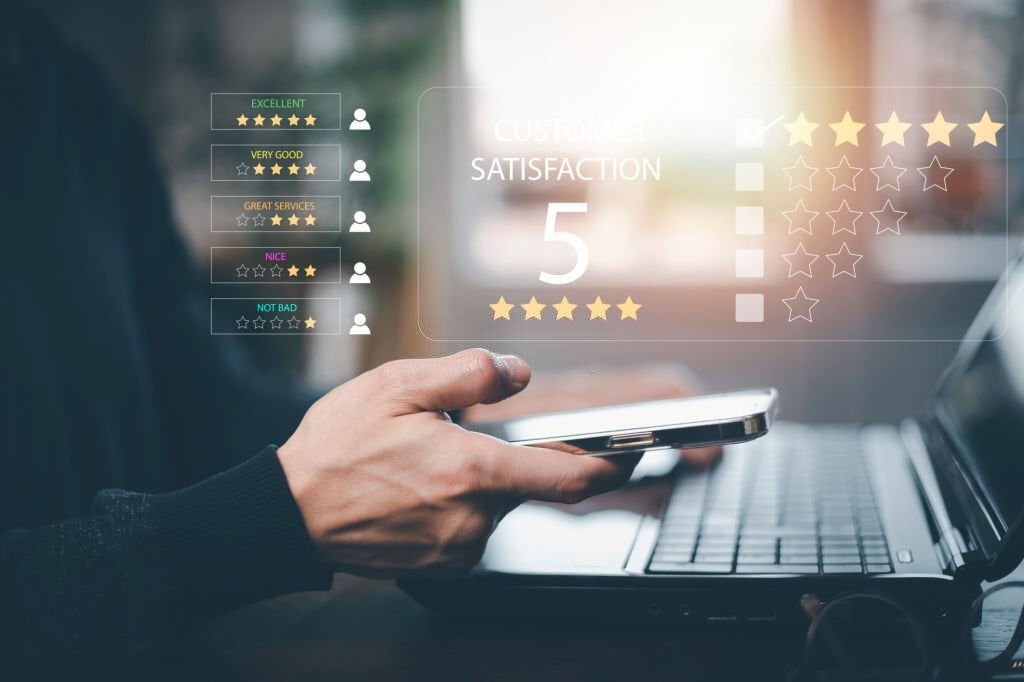Building a successful retail e-commerce website can be a daunting task, but it doesn't have to be. With the 8 easy steps we've shared in this blog, you can create a professional and user-friendly website that will help you reach and retain customers, increase sales, and grow your business.
Importance of a Retail E-commerce Website
Building an e-commerce website is important for a retail business because it allows the business to reach a wider audience and generate more sales.
With an e-commerce website, customers can browse and purchase products online, which is often more convenient for them than visiting a physical store. This can help the business attract new customers and increase its revenue.
Additionally, an e-commerce website can be accessed by customers at any time, which can help the business generate sales around the clock.
Steps for Building Your Retail E-commerce Website
Here are eight easy steps to building your retail e-commerce website:
- Choose a Domain Name
- Select a Hosting Provider
- Choose an E-commerce Platform
- Design Your Website
- Add Your Products
- Configure Your Payment and Shipping Options
- Test and Launch Your Website
- Promote Your Website
1. Choose a Domain Name
The first step to building your retail e-commerce website is to choose a domain name that is memorable, easy to spell, and reflects your brand. Your domain name is the address that people will use to access your website, so make sure to choose one that is catchy and easy to remember.
A domain name is an important part of an e-commerce website because it is the web address that customers will use to access your site. A good domain name can help customers remember your website and find it easily, which can increase traffic to your site and boost your sales.
Additionally, a domain name can help establish your brand and give customers a sense of professionalism and trustworthiness. Choosing a domain name that is easy to remember and relevant to your business can be an effective way to attract customers and build your online presence.

2. Select a Hosting Provider
Once you have a domain name, you will need to choose a hosting provider to host your website. There are many different hosting providers to choose from, so make sure to research and compare their features, prices, and customer support before making a decision.
A hosting provider is a company that provides the technology and services necessary to make your website available on the internet. To create an e-commerce website, you’ll need to choose a hosting provider that can provide the infrastructure to support your site. It includes things like storage space, bandwidth, and technical support.
A hosting provider can also help ensure that your website is secure and can handle a high volume of traffic. Overall, selecting a hosting provider is an important step in creating an e-commerce website because it provides the foundation on which your site will be built.
3. Choose an E-commerce Platform
Next, you will need to choose an e-commerce platform to build your website on. Popular options include Shopify, GoDaddy, and Magento. Make sure to choose a platform that is easy to use and offers the features and integrations that you need.
The e-commerce platform that is best for your business will depend on your specific needs and goals. Shopify, GoDaddy, and Magento offer a range of features and tools to help you create and manage your online store, including customizable templates, payment processing, and inventory management.
Before choosing an e-commerce platform, it's important to research and compare the options available to find one that is the right fit for your business. It may also be helpful to consult with an e-commerce expert or seek advice from other businesses that have experience with different platforms.
4. Design Your Website
After choosing a platform, you can start designing your website. This involves choosing a colour scheme, fonts, and layout that reflect your brand and make it easy for customers to find and buy your products. You can use pre-made templates or hire a web designer to create a custom design for your website.
Make sure your website is easy to navigate, customers should be able to find what they are looking for quickly and easily. Use high-resolution photos and detailed product descriptions to give customers the information they need.
Your website should be designed with the customer in mind. This means making it easy for them to find and purchase products, and providing clear information about shipping, returns, and other important details.
Many people shop online using their smartphones, so it's important to make sure your website is optimized for mobile devices. Your website should include clear calls to action this can include buttons that say, "Add to cart" or "Buy now," as well as promotional offers and other incentives to encourage customers to take action.

Related Article: Why Mobile Applications Are Essential For Fitness Retailers?
5. Add Your Products
Once your website is designed, you can start adding your products. This involves creating product listings, adding photos and descriptions, and setting prices. Make sure to include detailed and accurate information about your products to help customers make informed purchasing decisions.
For example, as a boxing and MMA gear retailer, you can create your product listing, and add photos and descriptions about the gear. The descriptions can include the size of the product, its usage, and the material it is made out of. This will allow the customer to easily decide on which product they want to purchase.
6. Configure Your Payment and Shipping Options
After adding your products, you will need to configure your payment and shipping options. To configure payment and shipping options for your e-commerce website, you will need to use a shopping cart software or platform.
This involves setting up payment gateways, such as PayPal or Stripe, and choosing the shipping methods and rates that you want to offer. Depending on this platform, you may be able to accept various payment methods, such as credit and debit cards, PayPal, and other online payment systems.
You can also use the platform to manage your shipping options, such as offering different shipping rates and methods based on the customer's location. You can also integrate the platform with your website so that the payment and shipping options are seamlessly integrated into the checkout process.
7. Test and Launch Your Website
Before launching your website, make sure to test it thoroughly to ensure that everything is working properly and that your customers will have a smooth and enjoyable shopping experience. This involves testing the checkout process, payment gateway, and any other features of your website to make sure they are functioning correctly.
Once you have designed and set up your e-commerce website, it is important to test it thoroughly before launching it to the public. This will help ensure that the website is functioning properly and that your customers will have a positive experience when using it.
To test your e-commerce website, you can use a variety of tools and methods. Some common steps you can take include:
- Test the website on different web browsers and devices to make sure it looks and works as expected.
- Try placing test orders on the website to make sure the checkout process is working correctly.
- Check that all of the product pages and other important pages on the website are loading properly and contain the correct information.
- Test the website's security to ensure that customer information is protected and that the website is safe to use.
It is also important to continue monitoring and maintaining the website after launch to ensure that it continues to function properly and provide a good experience for your customers. This may involve regularly checking for errors and bugs, making updates and improvements, and responding to customer feedback.

Related Article: Scope Of Big Data Utilization In Fitness Retail Stores
8. Promote Your Website
Finally, once your website is live, you will need to promote it to drive traffic and sales. This can involve creating marketing campaigns, running social media ads, and optimizing your website for search engines. By promoting your website, you can reach a wider audience and drive more traffic and sales to your online store.
Social media platforms like Facebook, Instagram, and Twitter can be powerful tools for promoting your e-commerce website. Email marketing is also an effective way to promote your e-commerce website by using email newsletters to share information about new products, special offers, and other promotions.
You can also invest in search engine optimization (SEO) which optimizes your website and its content so that it ranks highly in search engine results. Another way is by using influencer marketing your website can reach a wider audience and generate more sales.
Conclusion
Building a retail e-commerce website is a crucial step for any business looking to reach and retain customers, increase sales, and grow their business. By following these eight easy steps, you can create a professional and user-friendly website that will help you achieve your business goals.

